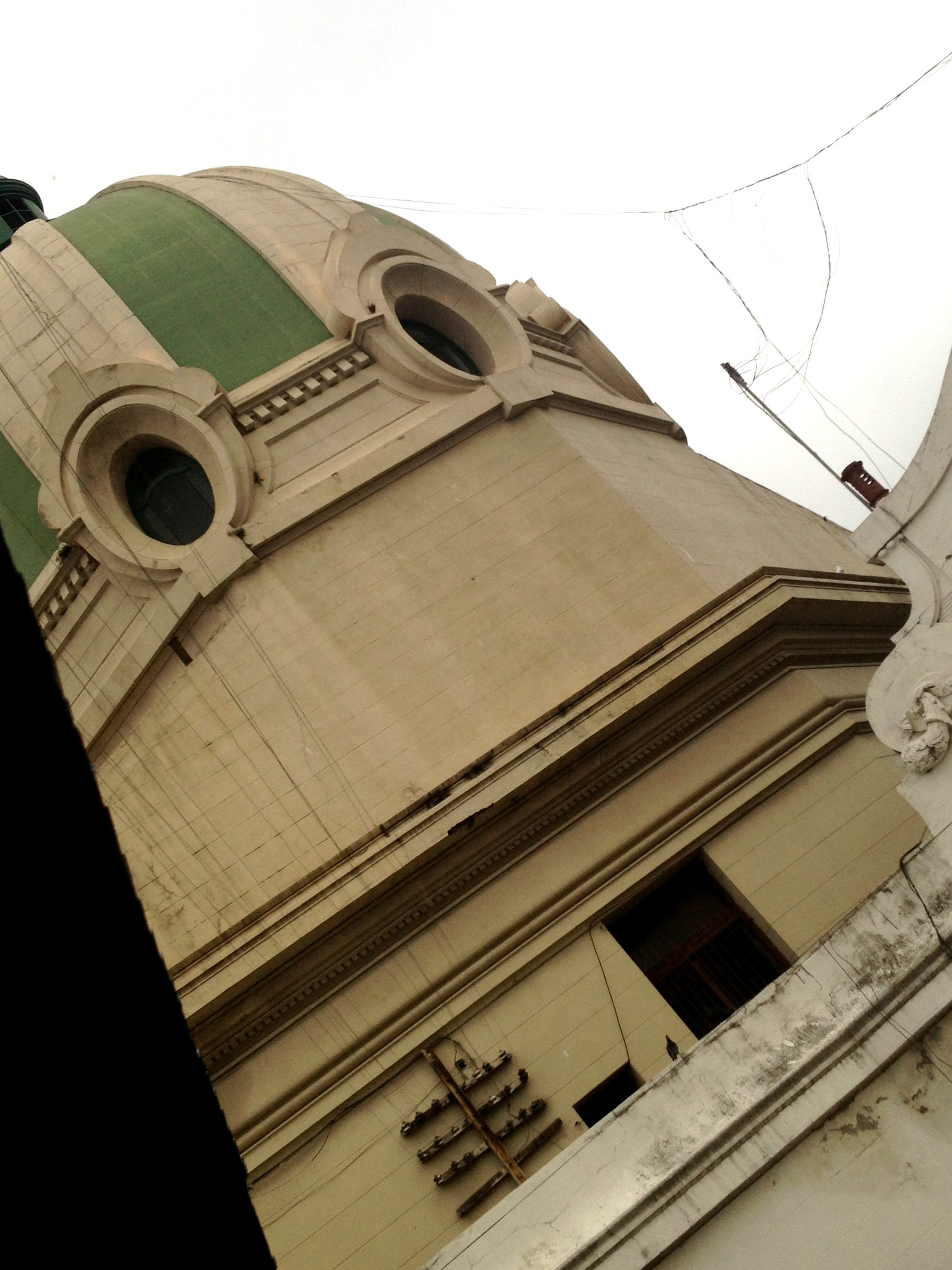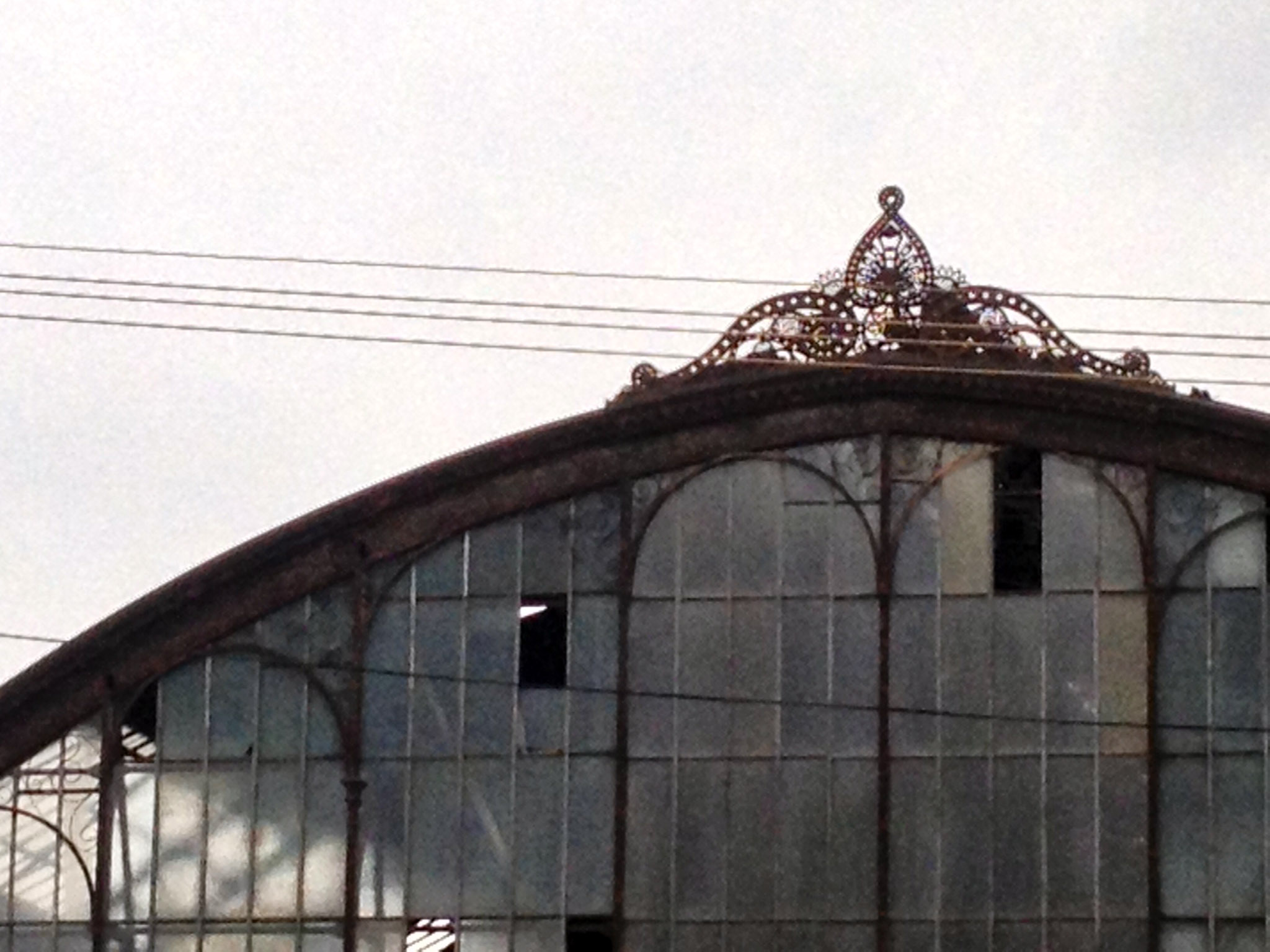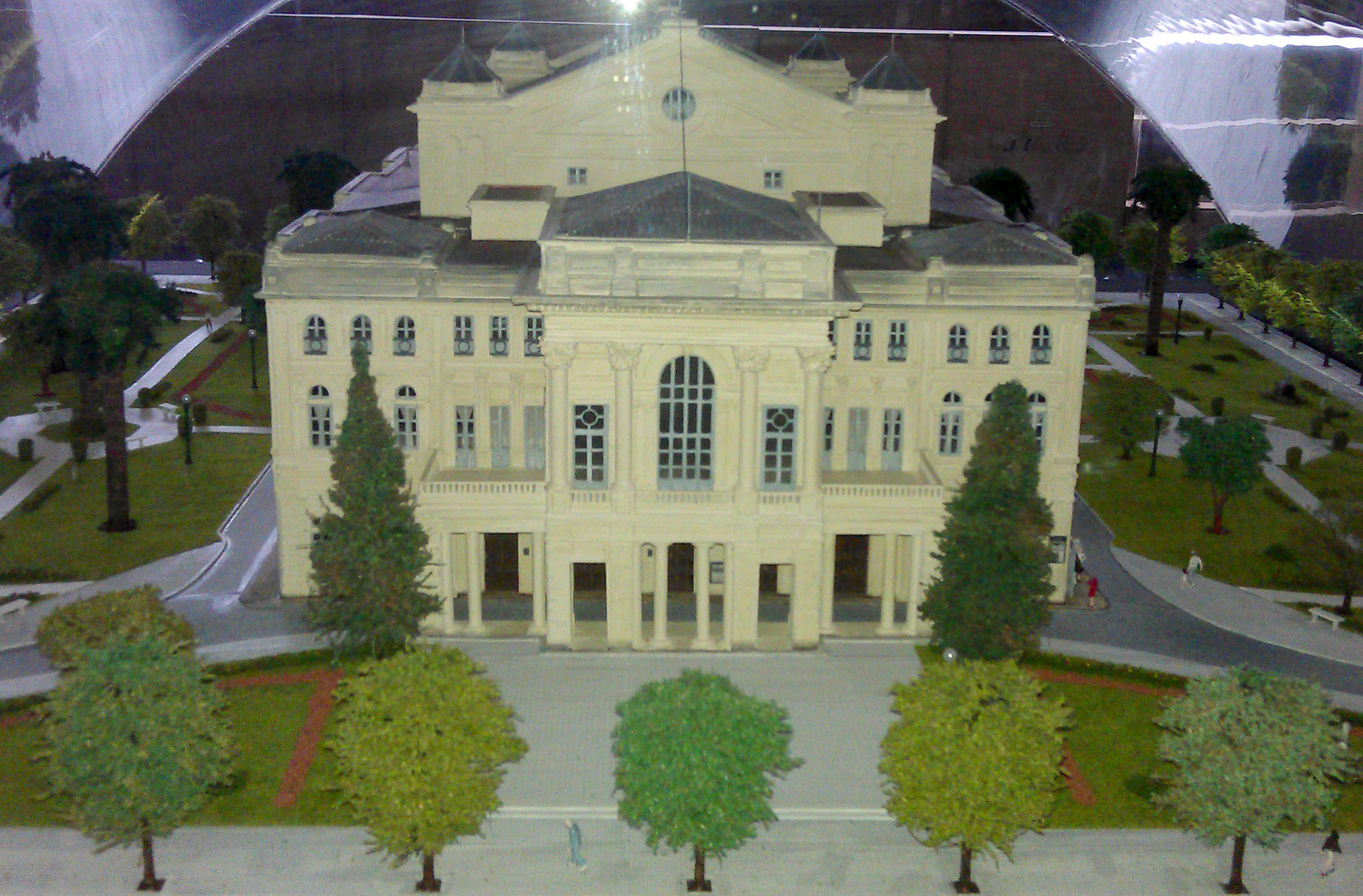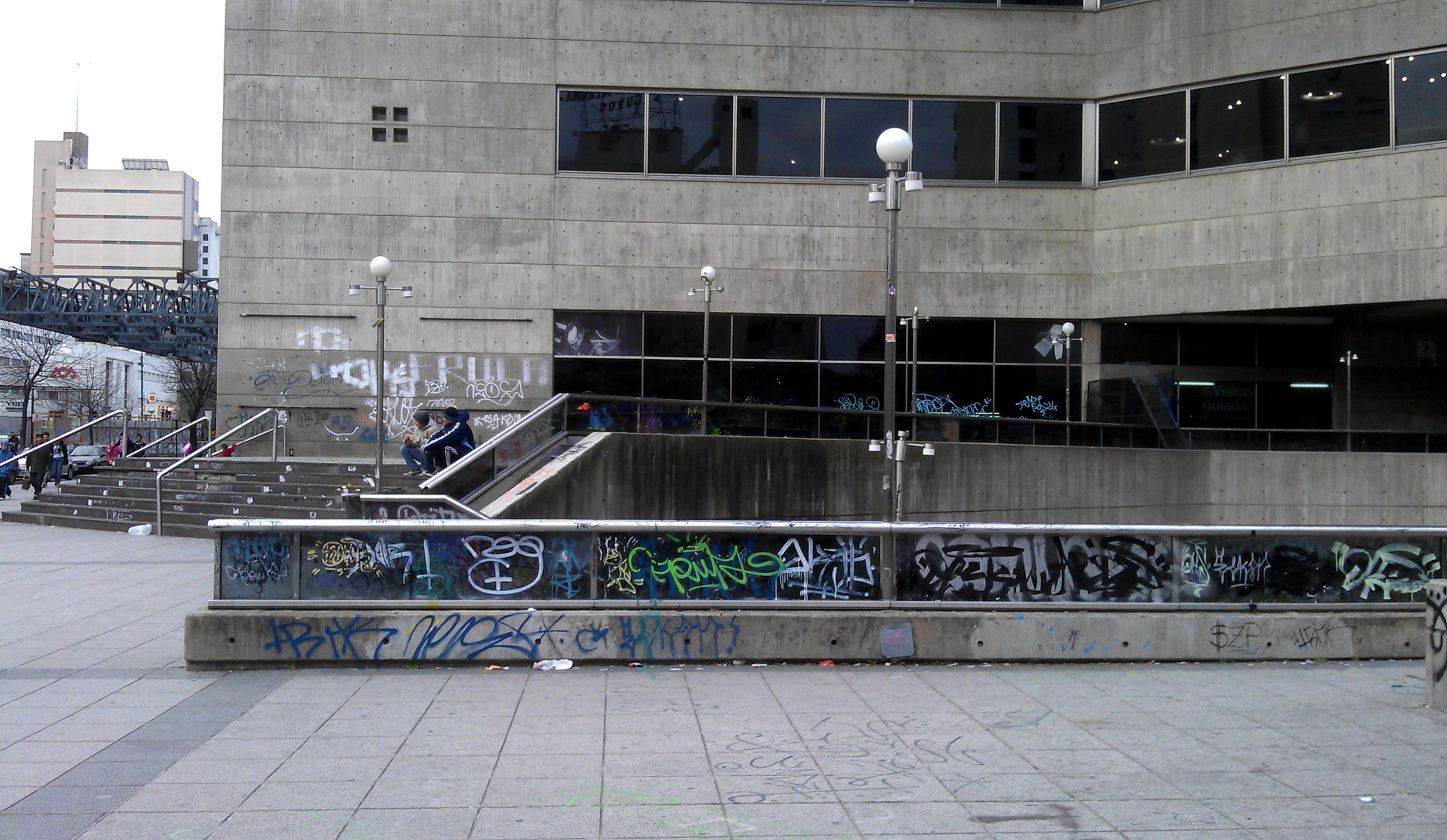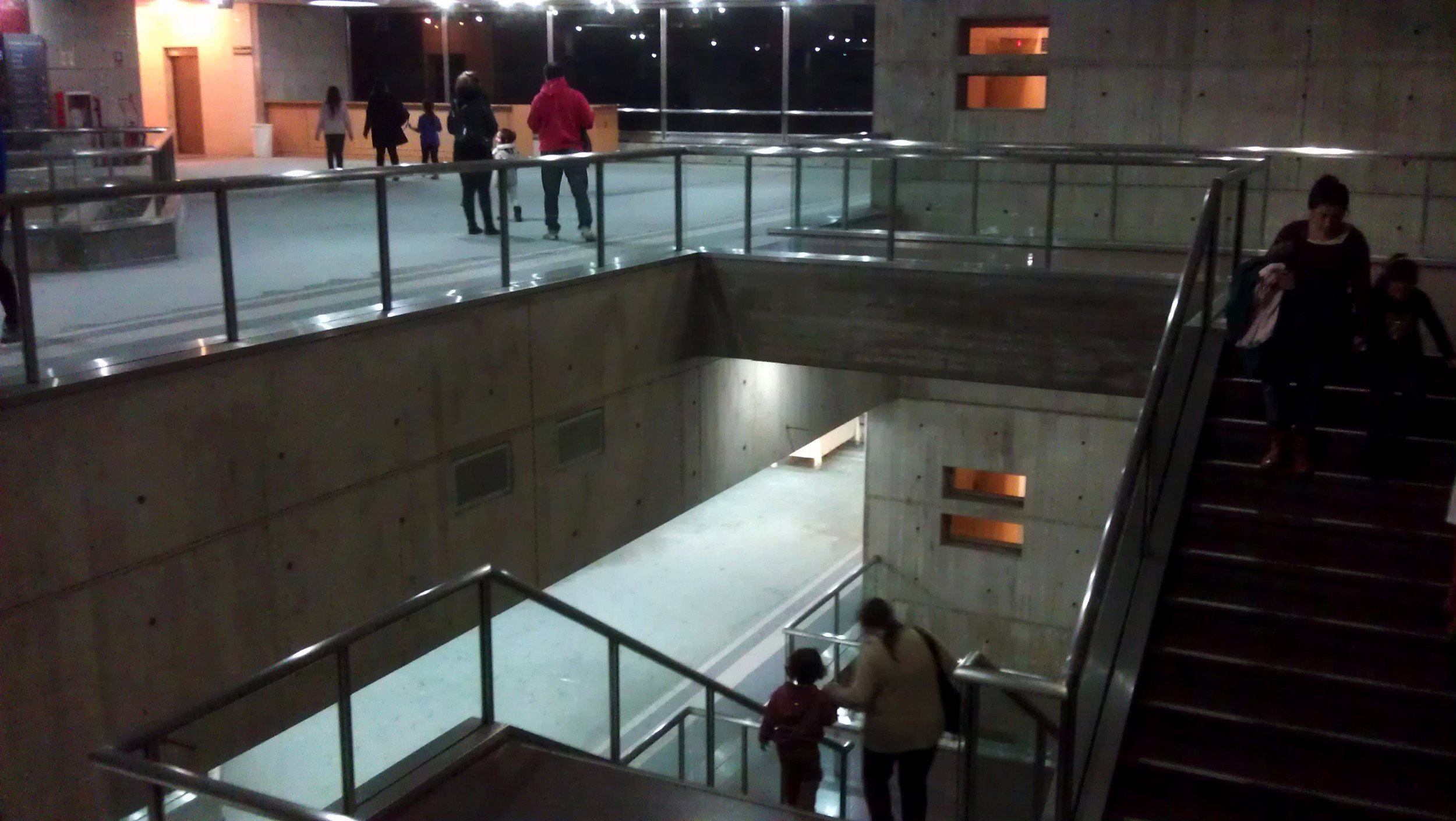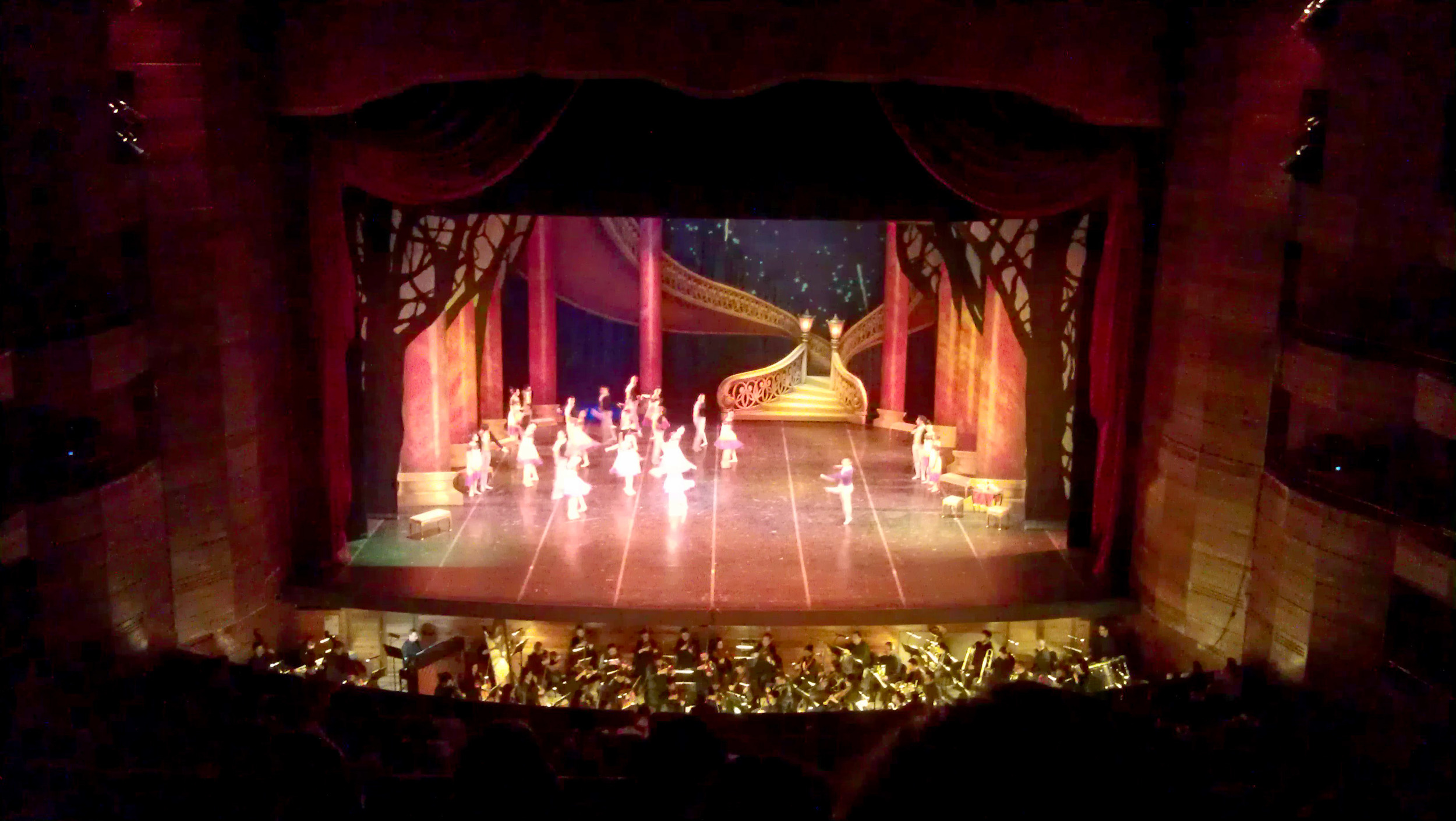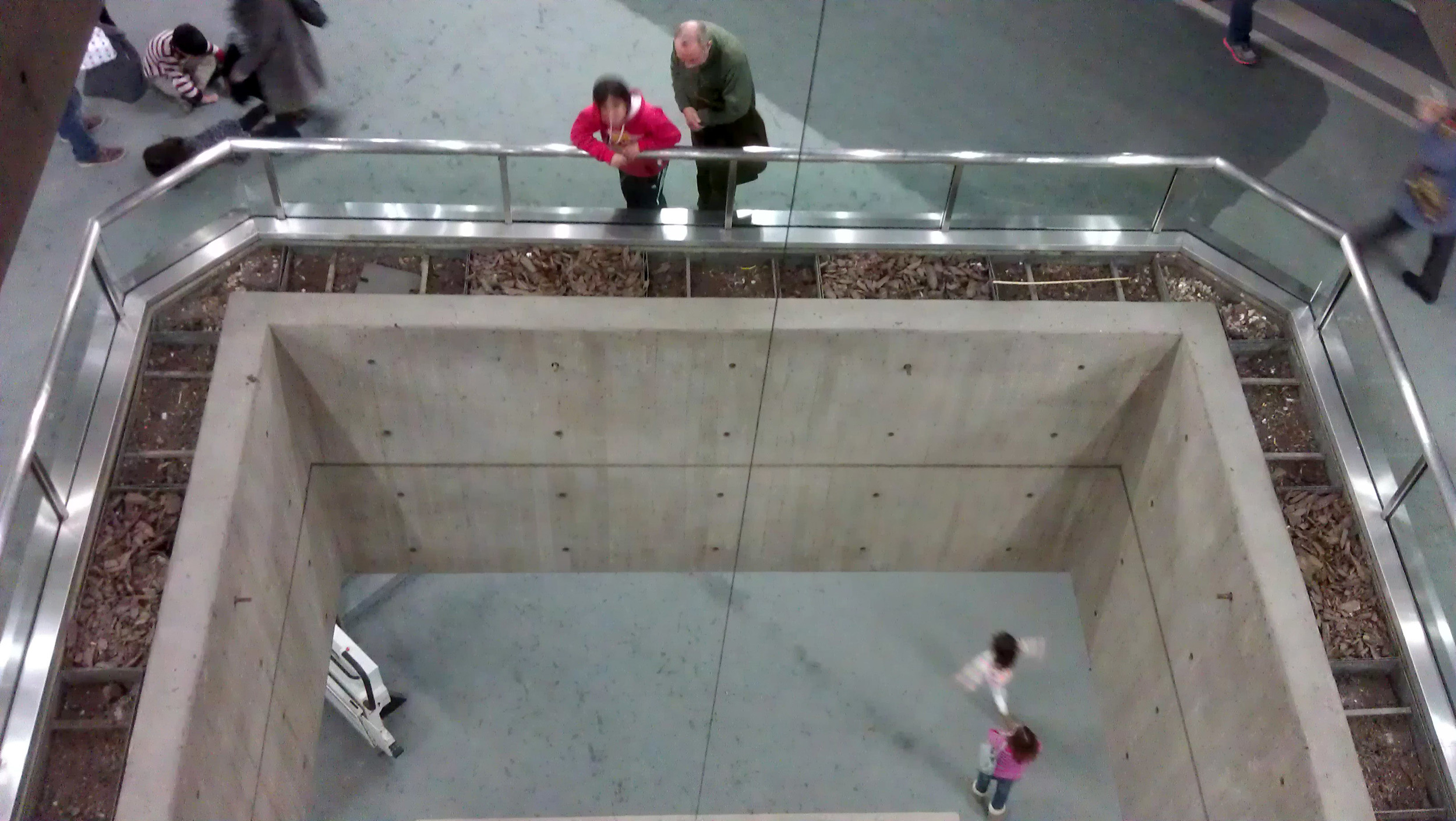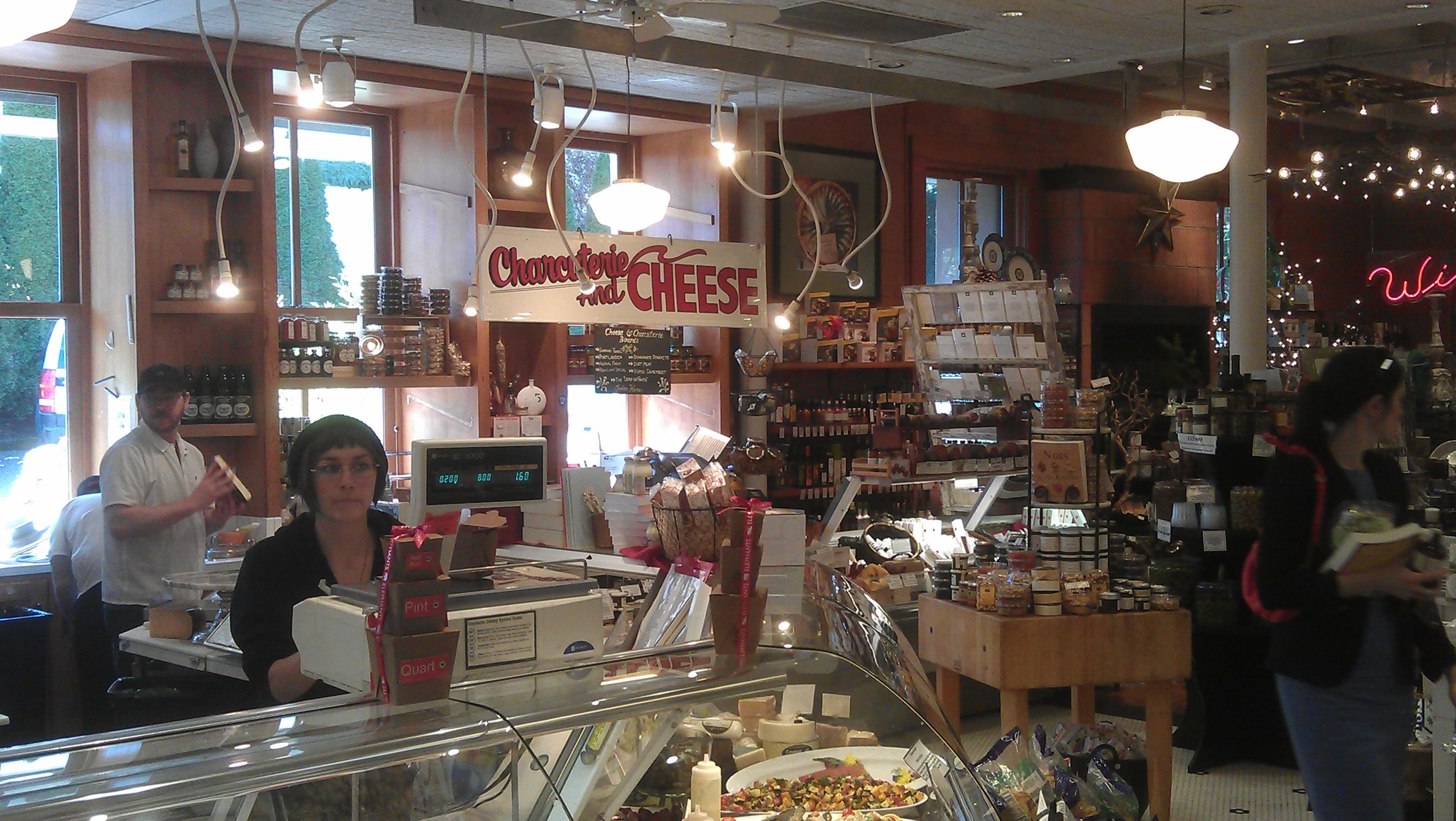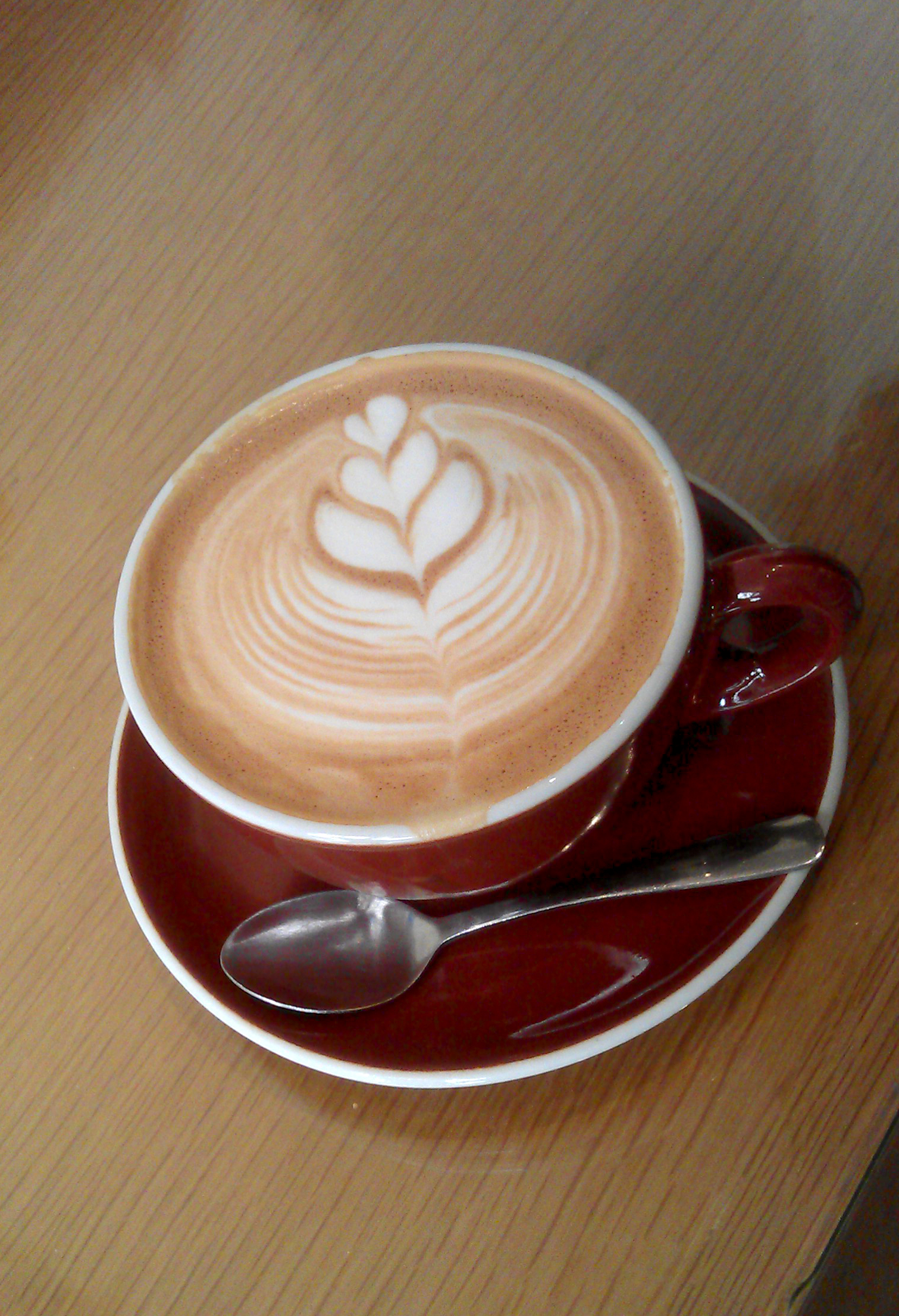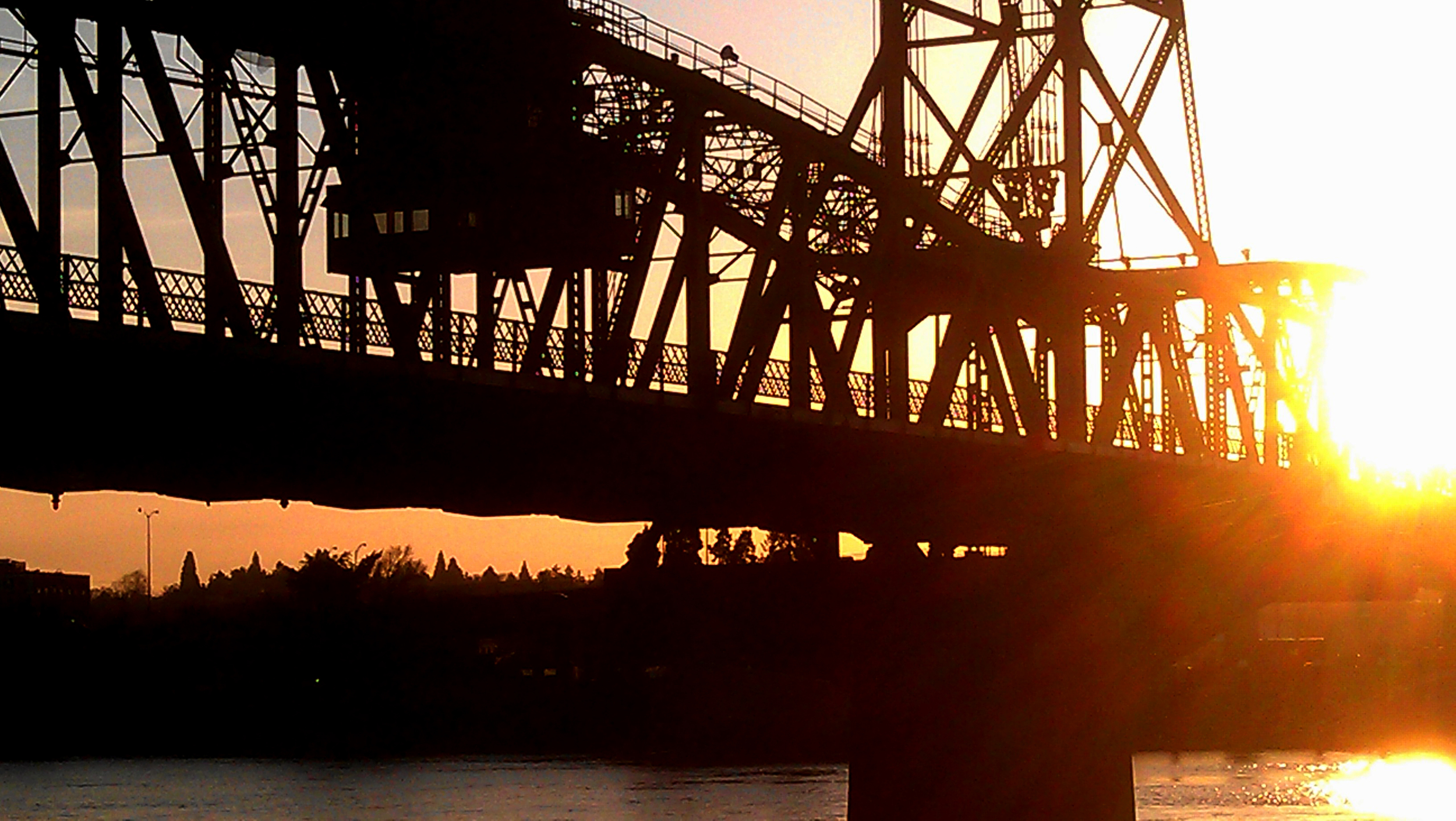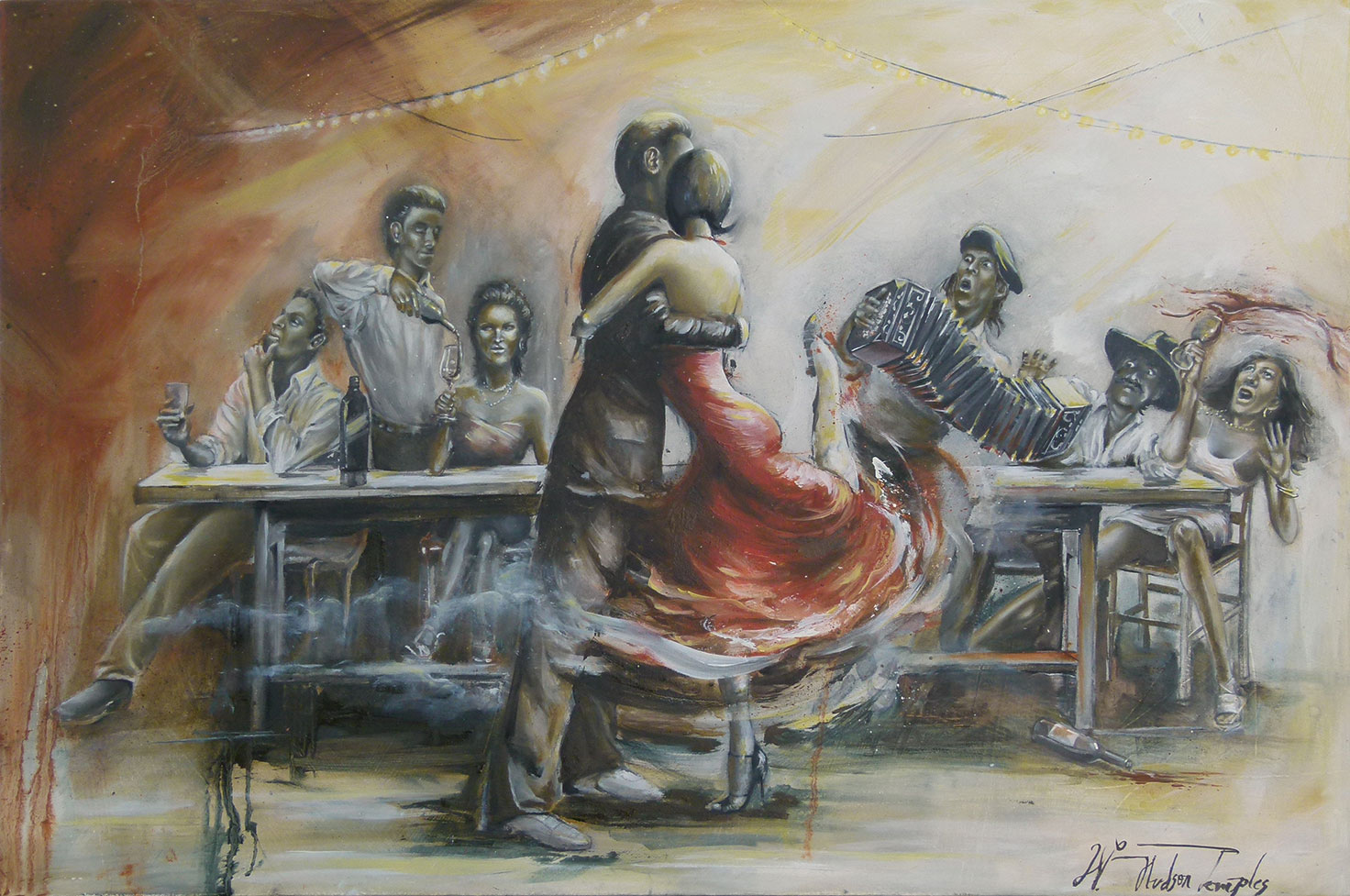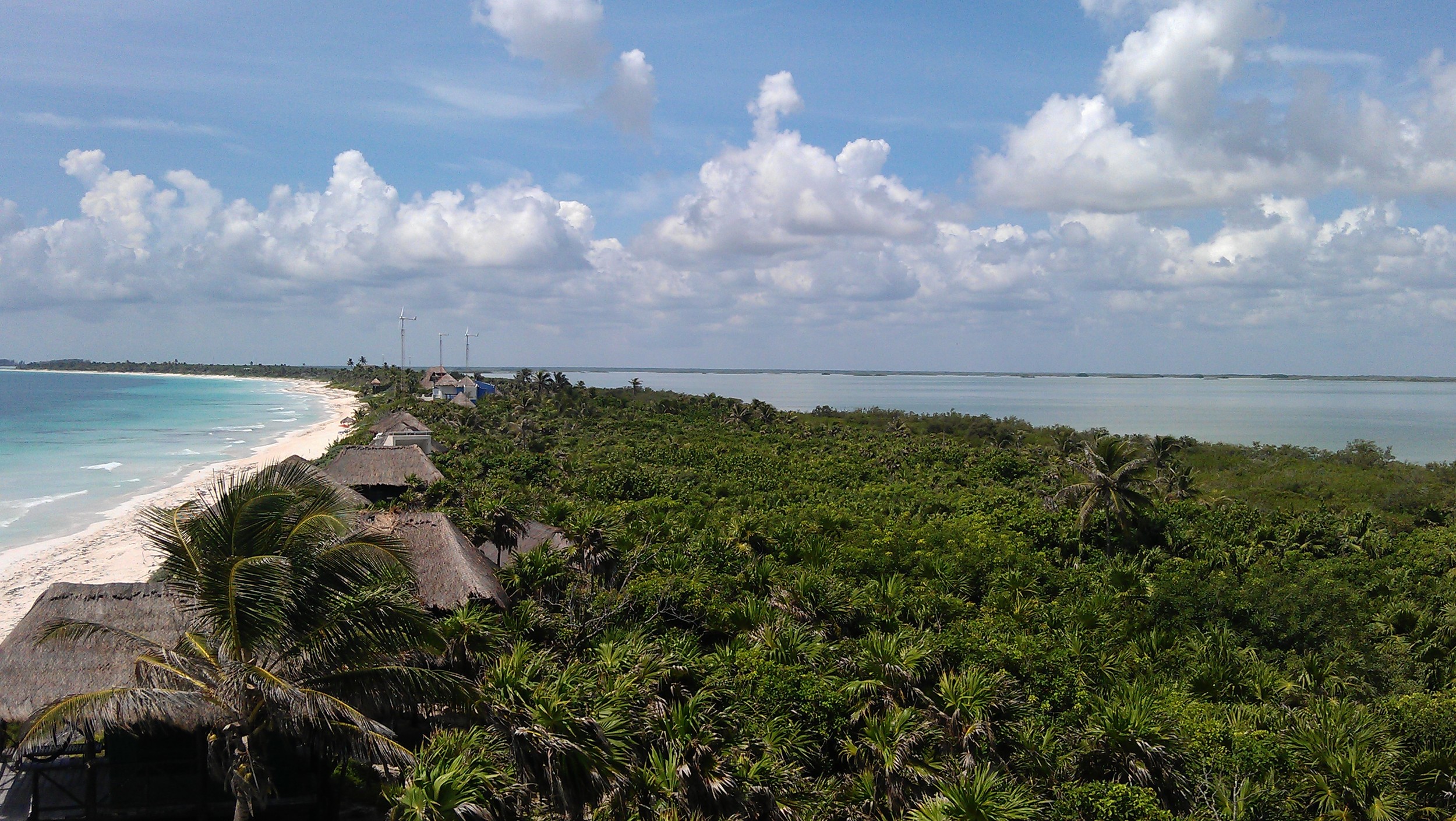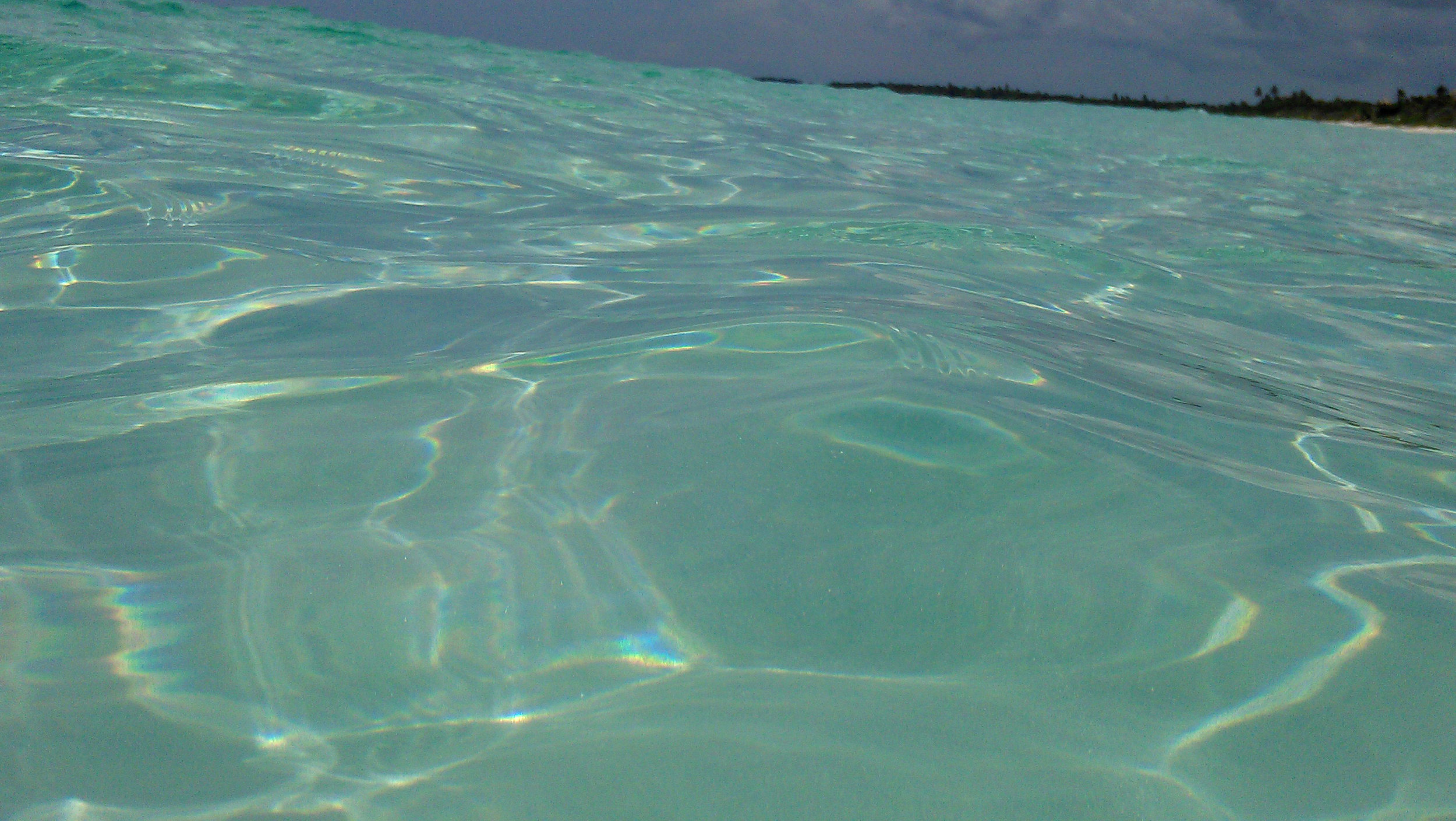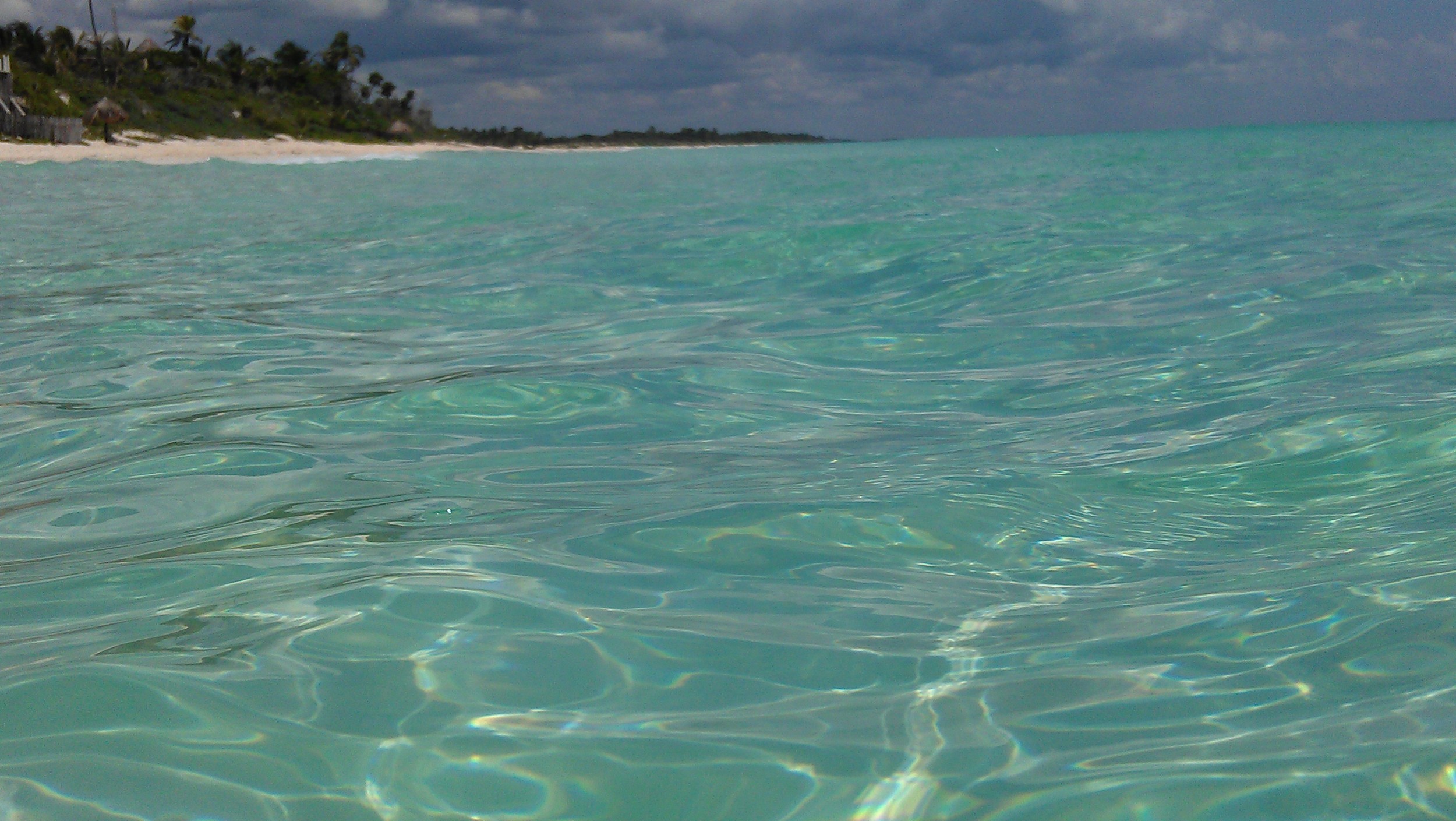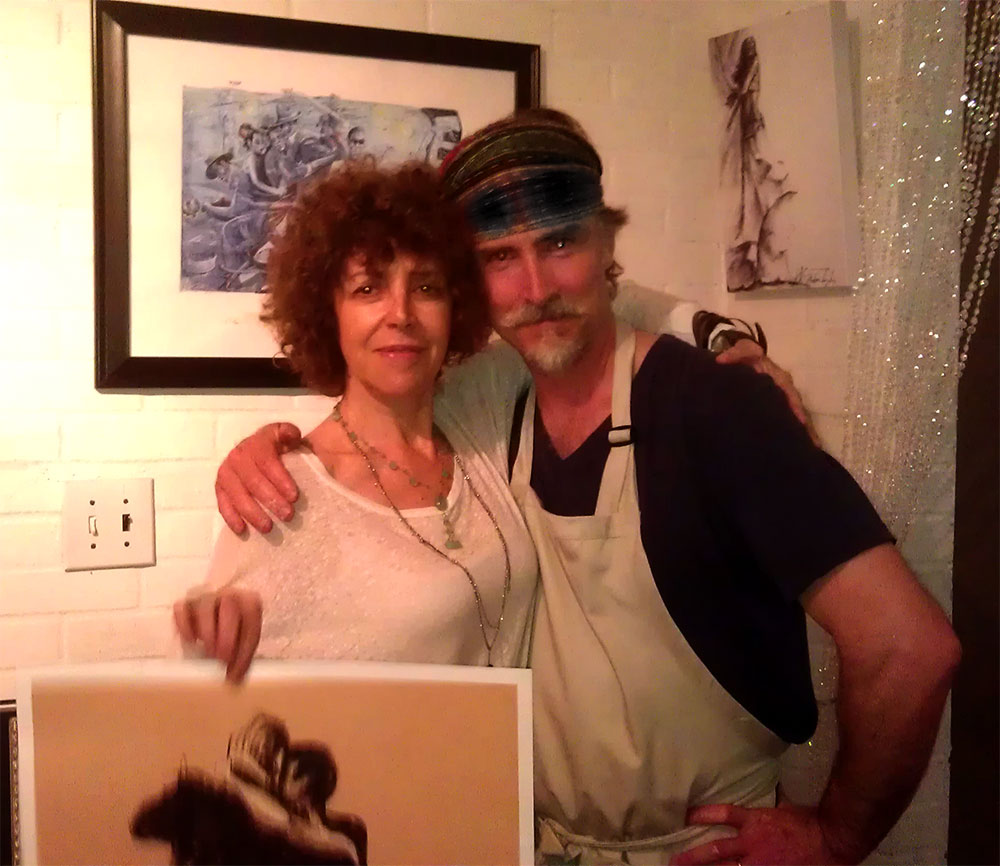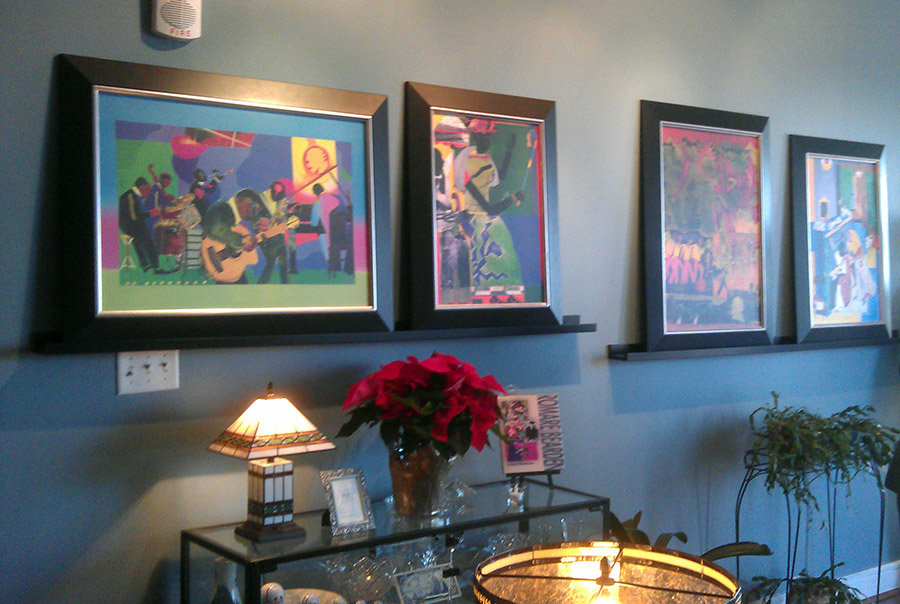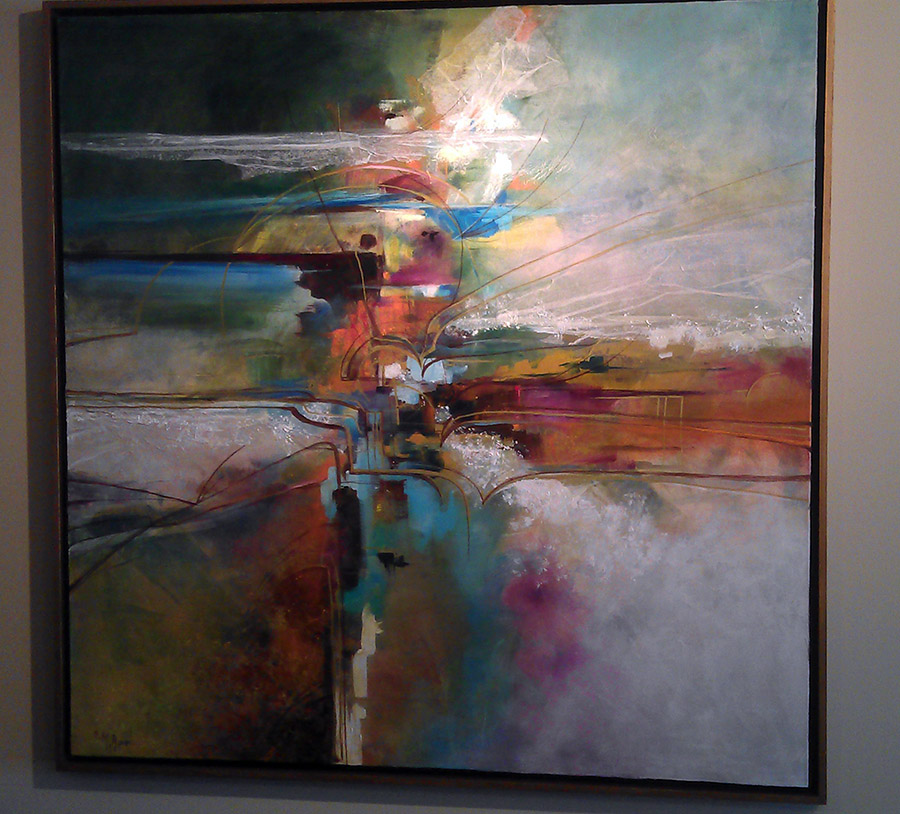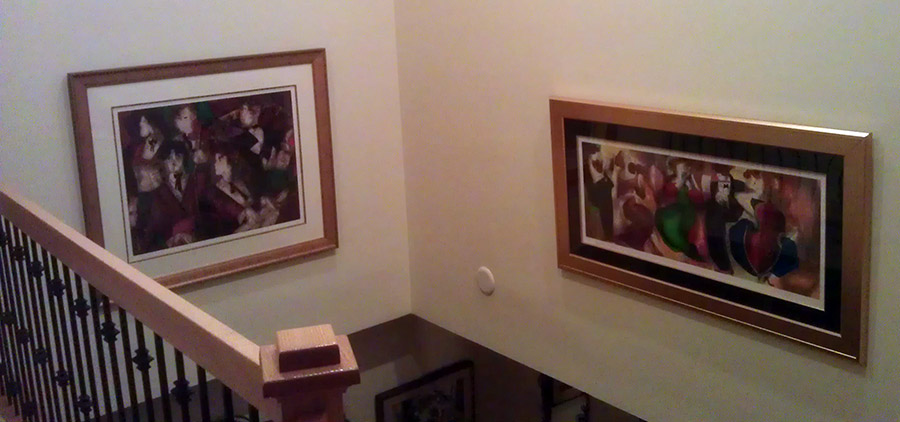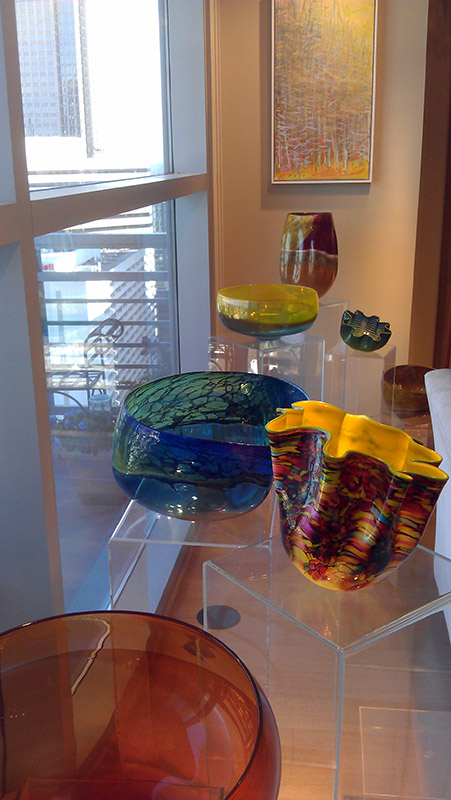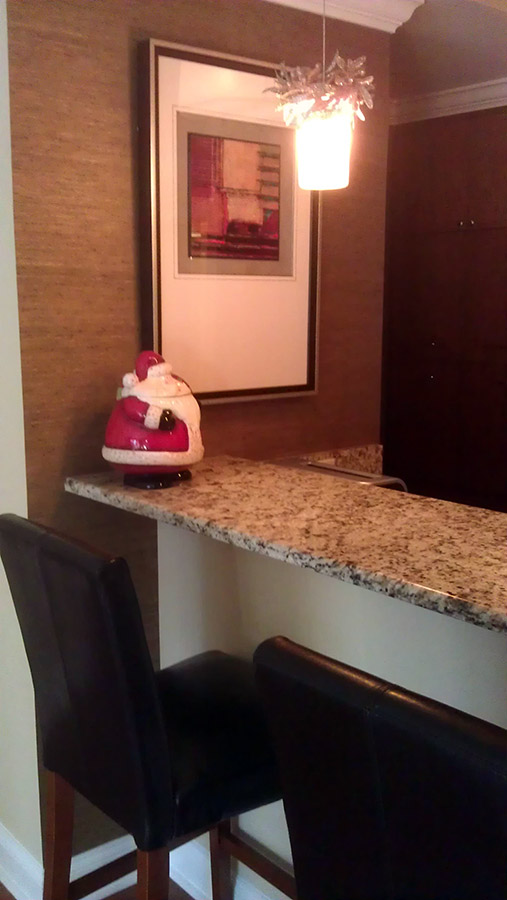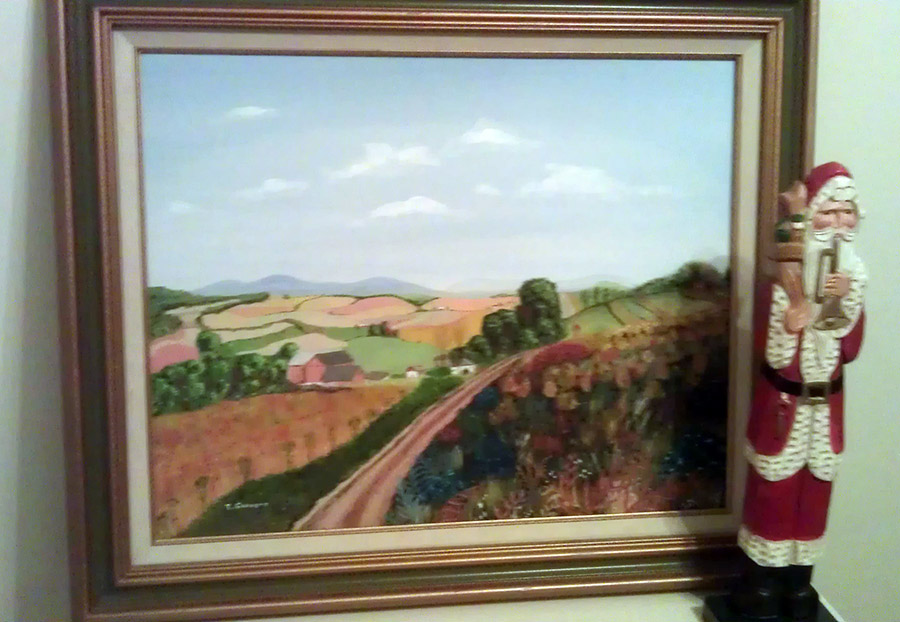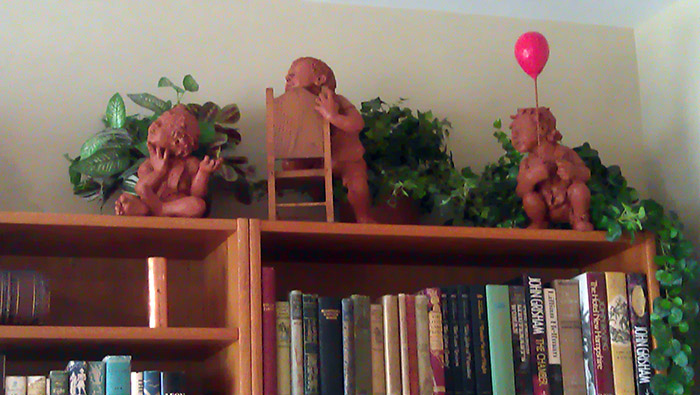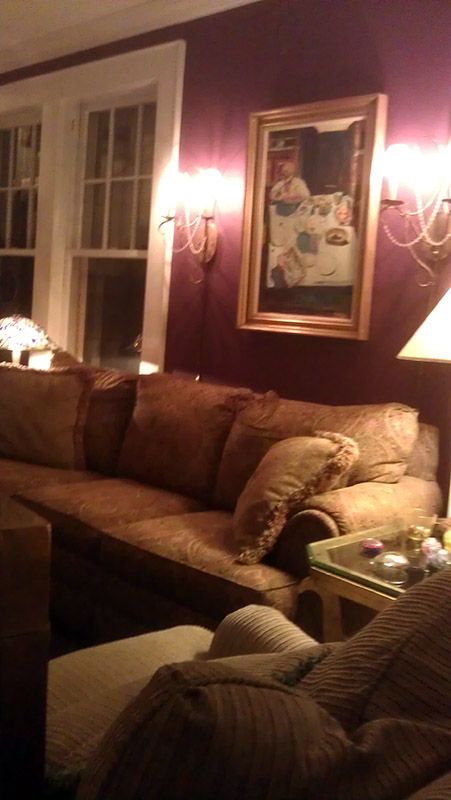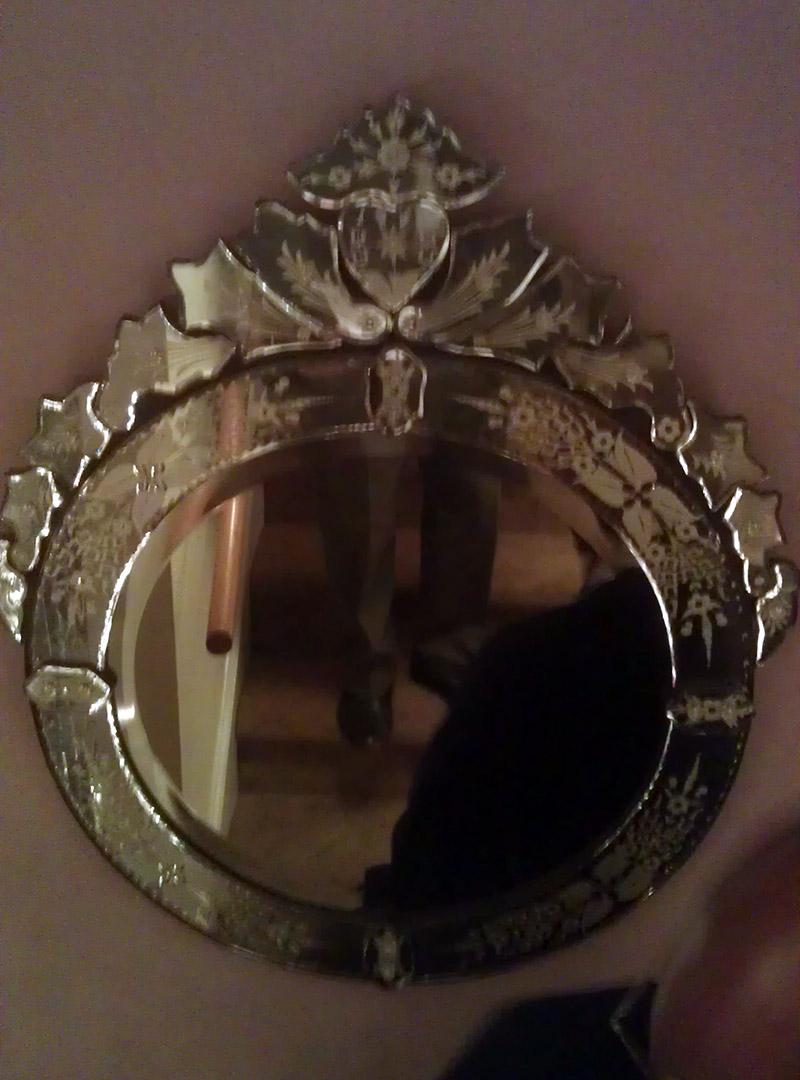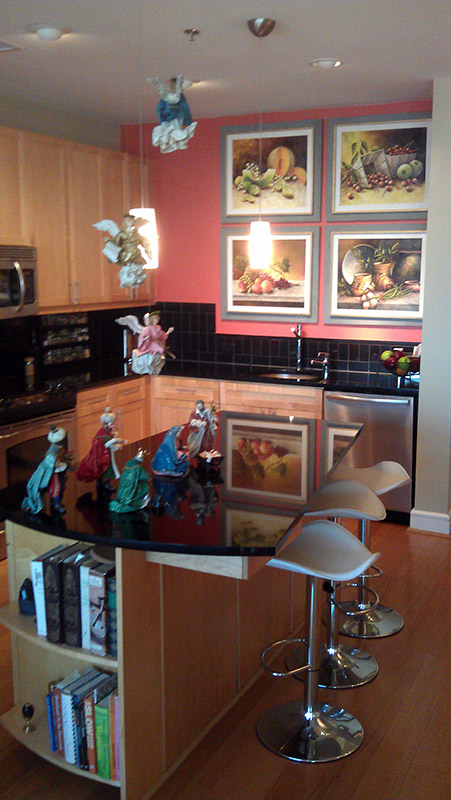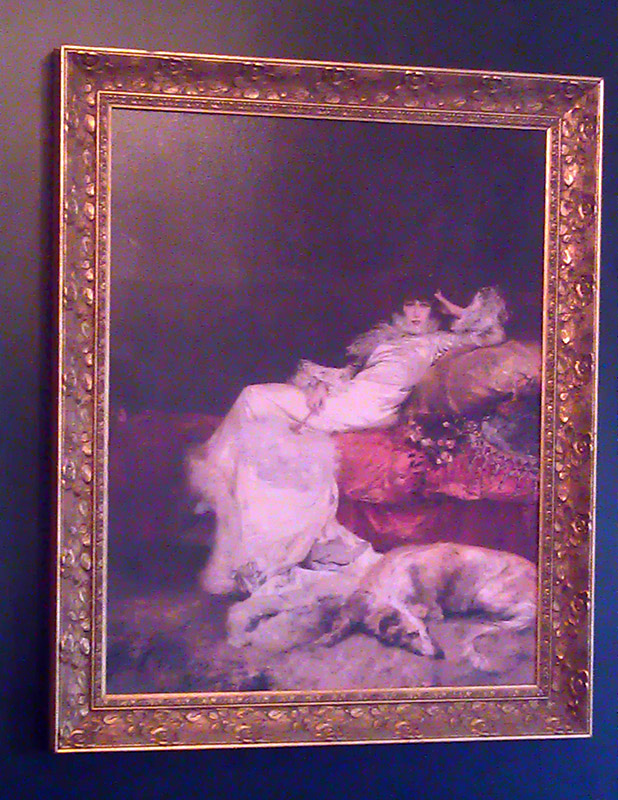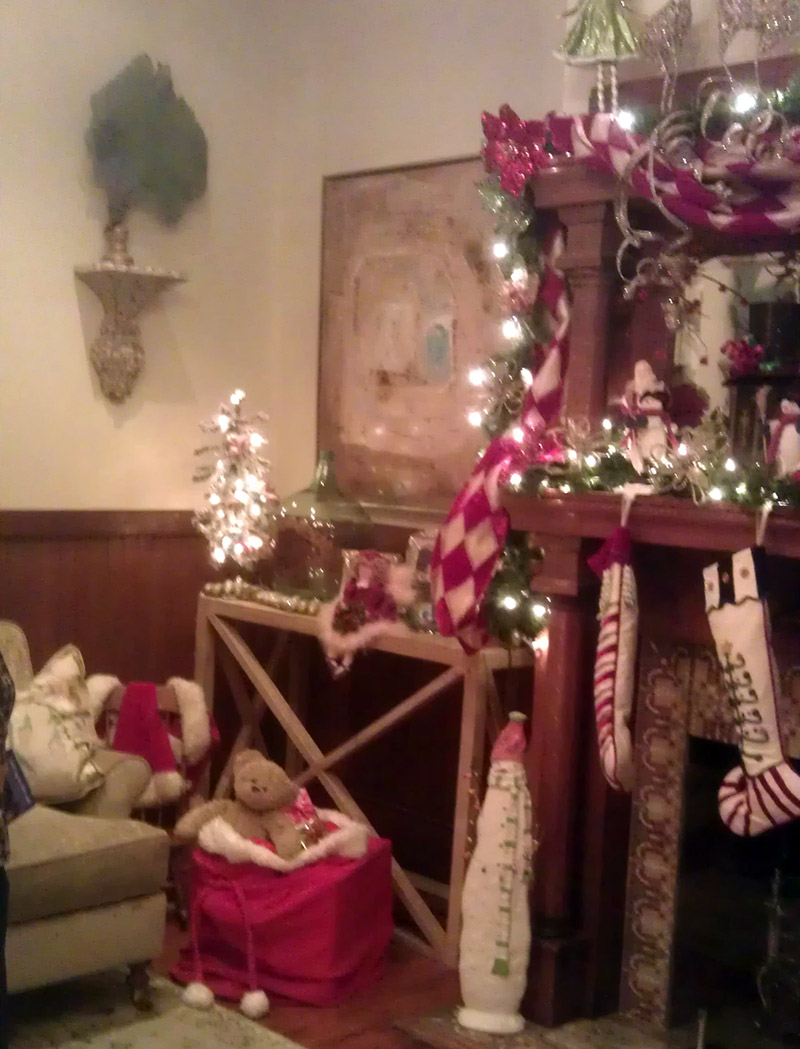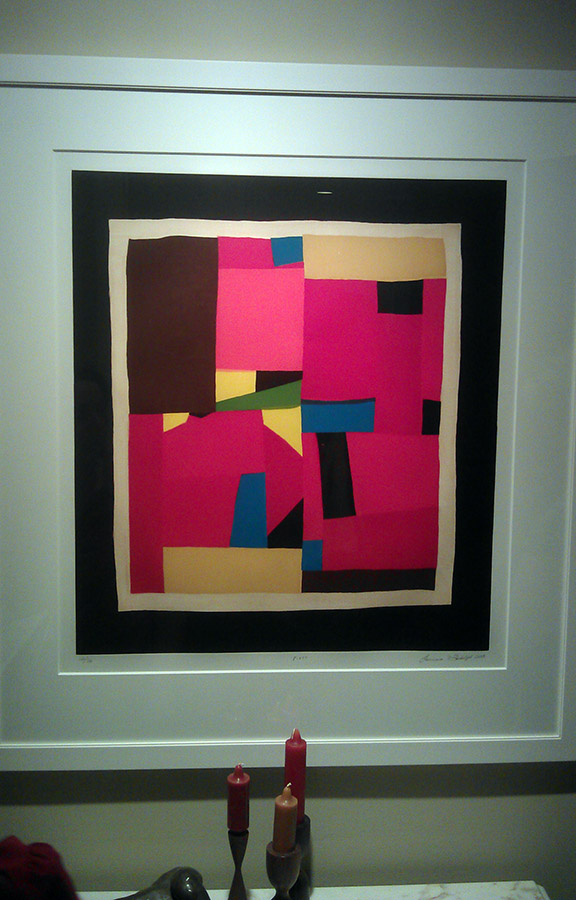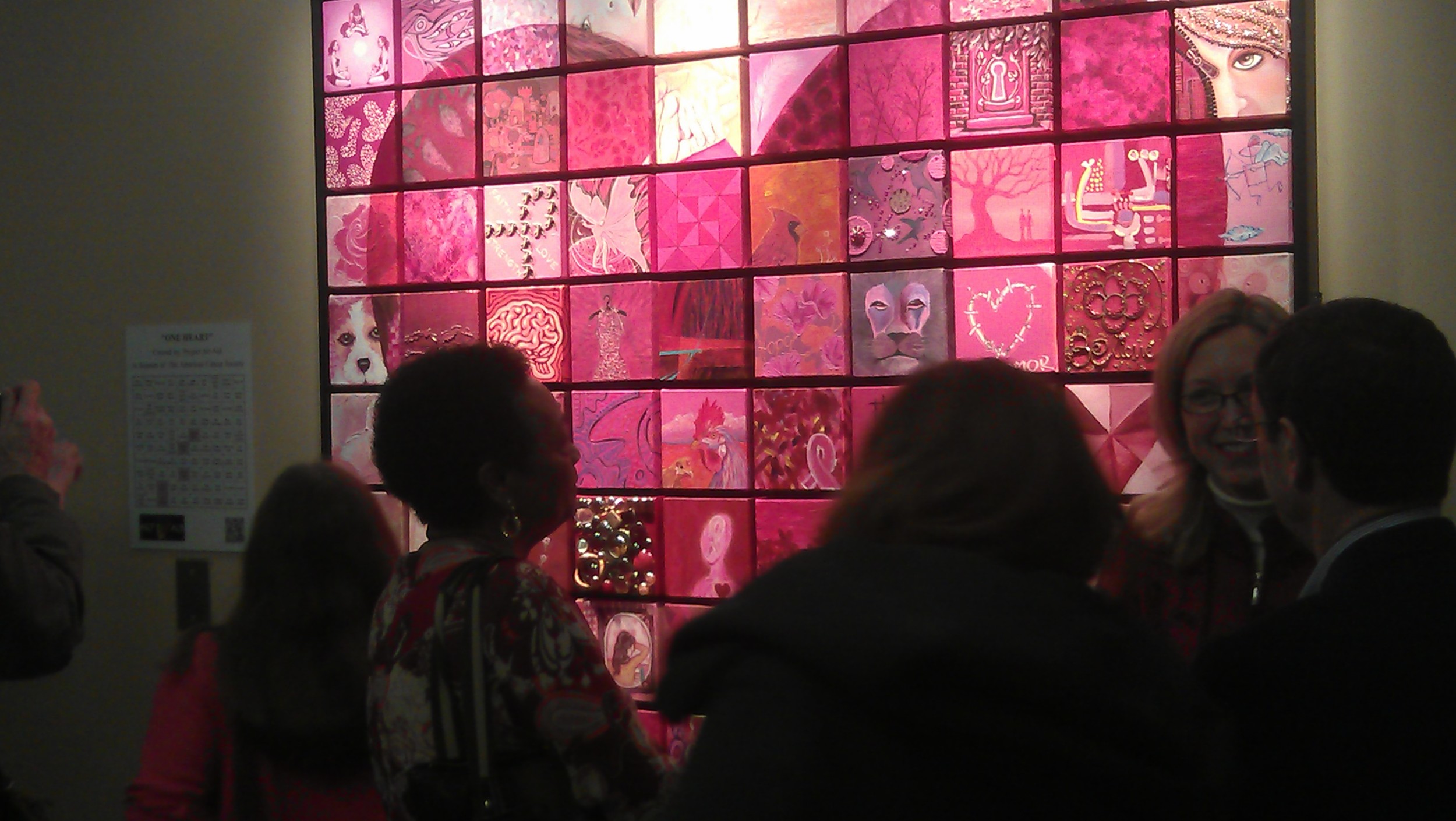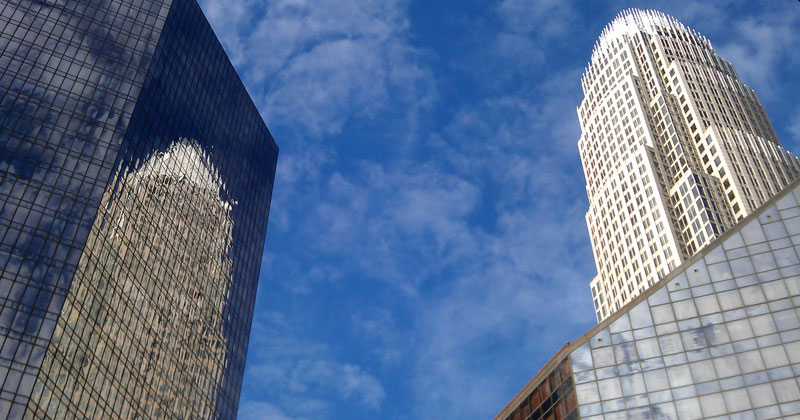 For me, Argentina has always meant Buenos Aires, or specifically, the Capital Federal. The crowded streets, the corner cafes, and of course, the Tango have brought me back to this city again and again. Given this, why would I leave the milongas behind and embark to the hinterland? The answer is to develop a deeper understanding of the country . Anyone can appreciate a café, or the diverse cultural and artistic offering of a world class city, but looking beyond requires more work - and resources. I am married to an Argentina native, and thus through marriage, half my family is Argentinean. Consequently, I have unique resources that allow me to access the richness of the country in ways that may not be available to others. Realizing this, it was goodbye bandoneon, hello charango.
For me, Argentina has always meant Buenos Aires, or specifically, the Capital Federal. The crowded streets, the corner cafes, and of course, the Tango have brought me back to this city again and again. Given this, why would I leave the milongas behind and embark to the hinterland? The answer is to develop a deeper understanding of the country . Anyone can appreciate a café, or the diverse cultural and artistic offering of a world class city, but looking beyond requires more work - and resources. I am married to an Argentina native, and thus through marriage, half my family is Argentinean. Consequently, I have unique resources that allow me to access the richness of the country in ways that may not be available to others. Realizing this, it was goodbye bandoneon, hello charango.
Even in Argentina, Jujuy is remote and inaccessible. I’m told that the expensive local flights are a barrier for many Argentineans who would like to experience the province. That leaves driving as the mode of transportation, but the time it take s to cross the approximately 1500 km from Buenos Aires to Jujuy can vary with the road conditions. At best, you’re looking at a couple of days and I was looking at more because I planned several stops along the way. Another consideration is gas, which is more expensive than in the U.S.. It’s worth pointing out that, petrol becomes more expensive as you move away from the Capital Federal. We paid between $5 and $8 pesos per liter. Here in the U.S., would be similar to paying around $4 to $7 dollars per gallon. Thus, after considering the expense, the location, and travel time, it’s safe to say that Jujuy is a destination for relatively affluent Argentineans and no one else. We departed Buenos Aires on Saturday, July 7th and traveled northwest, parallel to the Rio Paraná, on Route 9 to Argentina’s 3rd largest city, Rosario.

Here, we stayed only long enough to visit the Monumento de la Bandera. Flanked by Lola Mora sculptures, the monument is a megalith that is built on top of the grave of Manuel Belgrano, creator of the national flag.

In the interest of time, we continued on, to the province of Córdoba, and to the Capital city by the same name, Córdoba. Córdoba is Argentina’s second largest city and is known for its fine universities, but since I didn’t come to hear a lecture, we moved on towards Tucumán. Shortly before we crossed the border to Catamarca province, we had our first encounter with Argentina’s salt flats.

From a distance, it appears that you are approaching a lake, and in fact, you are. The salt flat is an evaporated lake; it is a vast bed of Halite created by desiccation. The effect is other worldly. To experience it, we drove across the flat until we were surrounded by absolute nothingness, and then we got out of our vehicle and walked on the bone-like surface of the flat. It is as if you are walking on a mummy; the surface was dry and crusty and had a pattern of ridges. The sun reflected off the salt crystals and nearly blinded me, even though I had sun glasses. It occurred to me, because I had failed to bring a hat or sun screen, that my pale, gringo skin was in danger of roasting. Therefore, we stayed only long enough to make the de rigueur photo illusions, the ones where it appears that you are holding tiny people in your hand. I know it’s pedestrian, but some things you just have to do.

From the salt flats, we headed north toward Tucumán. Tucumán is the smallest province in Argentina and the capital city is called San Miguel De Tucumán. Incidentally, we entered the capital on the one day of the year that is celebrated like no other, the 9th of July. This is the date, in 1816, that national hero, Manuel Belgrano, at the Congress of Tucumán, declared Argentina’s independence from the Spanish Empire. It is the Philadelphia of Argentina. The emancipation occurred at the Casa de Tucumán, and is celebrated all over the country but most vigorously in San Miguel De Tucumán. So, it was carnival when we arrived. The streets were packed with people, trash littered the sidewalks, and it was completely chaotic. Despite this, I connected with the place immediately. The city, which is approximately the size of my home, Charlotte, North Carolina, and considered to be Argentina’s fifth largest metropolitan area, sits at the foot of a huge mountain range. These mountains are hard to ignore as they tower over the western side of the city with some peaks reaching over 5000 meters. We would cross them in our car on the way to the valley of Tafi. However, first we would explore San Miguel. San Miguel has many elements that I deem desirable for very “livable” cities. Some of those elements are, wide plazas and narrow streets, big parks and interesting architecture, art galleries and theater, and of course, schools and academies. San Miguel features all of these and more. They even have some pedestrian-only streets; no cars allowed. San Miguel is a college town that boasts several renowned universities, The National University of Tucumán, The national Technological University, and the Saint Thomas Aquinas University of the North. It’s worth noting that the world famous singer, Mercedes Sosa, is from San Miguel De Tucumán.

There are other things I like about San Miguel De Tucumán. For example, I found the weather very agreeable. It was winter when we arrived, but it was not cold. In fact, during the day it was warm and dry, while at night it cooled down, but it was never uncomfortable. I’m told that in the summer, it is a different story. The standard is severe heat and humidity. Summer is also the monsoon season and it rains a lot. That may be true, but it seems that for half the year the weather is quite pleasant.

San Miguel De Tucumán also has great food, but you have to know what to order. Trying to eat as if I was still in Buenos Aires was a mistake. Regional is the way to go. For instance, at one restaurant, my wife’s uncle ordered fish. Yes, the Salí river flows nearby, but he learned the hard lesson of why the region is not

known for seafood. Likewise, I had to redefine my idea of asado, replacing the lomo and morcilla with chivito and later, lama. Sadly, one of my favorite Argentine indulgences, helado, or ice cream, was inferior to my favorites back in the Capital Federal. San Miguel De Tucumán has some other culinary offerings including a stew called Locro, which has corn and, as far as I can tell, everything else they could find in it.

However, regarding Tucumano food, the run-away winner is the empanada. I was told ahead-of-time that San Miguel De Tucumán had Argentina’s best empanada s and that is no joke. They are the best I have ever tasted. I had the beef empanada, the caprese empanada, the choclo empanda, and the mondongo empanada- they were all delicious. It is possible that it is not the filling that make these stuffed pies so good but the dough, or more specifically, how they cook the things. Empanadas are sometimes fried, but in San Miguel, they are baked in bread ovens.

Bread ovens are ubiquitous in Northern Argentina, but ironically they are not employed for the purpose of bread making. Argentineans typically serve a processed, and quite dreadful, baggett with meals. But here, in Tucumán they bake an exquisite empanada with their ovens. The pastry is sumptuous with a smooth feel and a golden color that has just a

bit of char on the crest. Yum. It occurred to me, that it would be a fascinating experience to move to San Miguel De Tucumán for one year and make it a sort of base camp for exploration of the entire region. Not only Salta, Catamarca, and Santiago Del Estero, but beyond. Paraguay, Bolivia, Chile, and Peru are all accessible from Tucumán. Perhaps that is a bit ambitious, but still, the idea endures. Ok, so I mentioned the huge mountain range that dominates the western horizon of San Miguel De Tucumán. These are actually the foothills of the Andes, but the term foothills is misleading as they are quite a bit bigger than hills, and in fact, very imposing mountains. The name of these mountain was never clear to me. I have read that they are referred to as the Sierra de Aconquija or las cumbres Calchaquíest , although on my map, the cumbres Calchaquíest appear to be located slightly North.

The locals did not seem to know the names or, for that matter, care. When asked for the name of the massive mountains that cast a shadow over his home, one Tucumano simply replied, “ mountains”. Later, as we crossed the mountains, I found a local and posed the same question. This lifelong mountain dweller explained to me that mountains were referred to as the Tucumán Mountains, but I couldn’t find an official reference to mountains by that name. I guess it’s not that important; I know folks in Charlotte that don’t know the names for landmarks that surround their homes. The important point is

that the mountains were big and crossing them was rather exciting because the road was narrow, winding and steep. There was no shoulder or guardrail to provide you with a secure feeling. The scenery was beautiful however, and as we entered Tafi de Valle it became spectacular. Tafi de Valle is an

area nestled in the mountains in such a way that it could inspire a painting masterpiece. Since I didn’t have time to paint it, I attempted to photograph the place but was disappointed because I couldn’t come close to capturing the atmosphere . The place is vast, surrounded by mountains and the center piece is a large man-made lake, or what Argentineans refer to as a dique. It is called Angostura.

The valley makes an excellent retreat for Tucamanos that live in San Miguel. There are small villages on either side of the lake; one has developed as a tourist destination with shops and restaurants while the other has a more local feel. El Mollar, the more native village, is the location of the Parque de los Menhires, a field of, what could be described as, ancient phallic symbols. Large stones, each carved with patterns and designs, have been set out across a slope overlooking the lake. They were created by the pre-Columbian Indian people that inhabited the area and worshiped the sun. If you are expecting something on the scale of the Moai, the Easter Island Statues, then you’ll be dissatisfied.

The maximum height of these monoliths is about 5 meters and they are about 1 meter wide. Still, archeologists believe that the place was once considered to be the most sacred of sites. From Tafi de Valle, we headed to into wine country, Cafayate. Cafayate is located in the province of Salta, in the Valles Calchaquíes. Surrounded by mountains and bodegas, the colonial-style village is a popular tourist destination. Cafayate is probably the cleanest town that I’ve ever visited in Argentina. Furthermore, the weather was very agreeable, sunny and warm, without any humidity; it was perfect for dinning outside and most restaurants had sidewalk seating. We tasted several wines and tried to compare them to the wines of Mendoza, which are a staple in my home. My wife and I

agreed that, in general, the regional whites trumped the area’s reds, and in fact, Torrontés is the region’s most prevalent variety. Wine is so ubiquitous in Cafayate that when we visited the heladería, we found that the ice cream came in different wine flavors! We stayed one night in Cafayate and then departed for the capital city of Salta, which is also called Salta. The route from Cafayate to Salta is through the Quebrada De Cafayate, a desert canyon with incredible rock formations and amazing views. The road winds through this dramatic landscape and is peppered with markers that indicate points of interests. Argentinians have very creative names for locations. For example, we saw a tremendous rock formation known as the Titanic, ostensibly because it was the shape of a ship with one end sinking.

We also paid a visit to El Anfiteatro , the Amphitheatre, and La Garganta del Diablo, the Devil’s Throat.

All of these areas were magnificent and though I took photos, I was chagrined that I was unable to capture the awesome character of the locations.
After experiencing Cafayate, I had very high expectations for the Capital, Salta. I had naively developed the idea that Salta must be a large version of Cafayate. I guess that’s like thinking New York to be a big version of Lake Placid. Well, I learned otherwise. Salta is a large modern town. It reminded me of towns in the U.S. with its wide thoroughfares, strip malls, and suburbs. Although it did have a historical section with the usual plaza, cathedral, and cabildo, this area had been blended with some very contemporary structures.

There were a couple of interesting things that I discovered in Salta. One was the cable car. I have never seen a cable car in Argentina before, and in fact, I’m not accustomed to them in the U.S. either. However, here, in Salta, was a cable car. I don’t know if it’s the retro-appeal or the disaster potential ( http://www.guardian.co.uk/world/1999/jul/02/jonhenley), but I find that there is something very cool about cable cars. Though we didn’t have time to ride it, I’m told that it travels to the top of a large hill on the east side of the city and on clear nights,

provides impressive views of the city lights. The other thing that I learned was that the American actor and Tango dancer, Robert Duvall, met his Saltena wife, here, walking through the streets of Salta. That, I thought, was an interesting bit of trivia. From Salta we journeyed to Jujuy, and that will be another post.
.
.
 Recently, this painting found a permanent home. Here is some background information about it.
Recently, this painting found a permanent home. Here is some background information about it.
